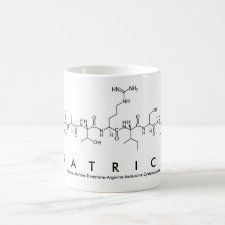
Authors: Ramakers G, Wackers G, Trouillet V, Welle A, Wagner P, Junkers T
Article Title: Laser-Grafted Molecularly Imprinted Polymers for the Detection of Histamine from Organocatalyzed Atom Transfer Radical Polymerization.
Publication date: 2019
Journal: Macromolecules
Volume: 52
Issue: (6)
Page numbers: 2304-2313.
DOI: 10.1021/acs.macromol.8b02339
Abstract: To be applicable to in vivo measuring, molecularly imprinted polymer (MIP) based sensors need to have high reproducibility, require miniaturization, and must be free of toxic materials (such as heavy metals). To address these requirements, a metal-free photo atom transfer radical polymerization (ATRP) grafting procedure is described using a pulsed UV laser as light source to create thin molecularly imprinted polymer (MIP) films (~10 nm thickness) on a sensor surface. Analysis via X-ray photoelectron spectroscopy (XPS) and time-of-flight secondary ion mass spectrometry (ToF-SIMS) revealed the composition of the polymer film and the necessity for an excess of functional monomer to ensure its incorporation are demonstrated. MIP films were templated toward the target molecule histamine, for which in vivo studies can reveal unknown pathological pathways of inflammatory bowel diseases. By use of impedance spectroscopy, the biosensor surface is characterized in comparison to nonimprinted film grafts, and a high selectivity and sensitivity toward the target molecule are identified, revealing a histamine concentration limit of detection of 3.4 nM
Template and target information: histamine



Join the Society for Molecular Imprinting

New items RSS feed
Sign-up for e-mail updates:
Choose between receiving an occasional newsletter or more frequent e-mail alerts.
Click here to go to the sign-up page.
Is your name elemental or peptidic? Enter your name and find out by clicking either of the buttons below!
Other products you may like:
 MIPdatabase
MIPdatabase









